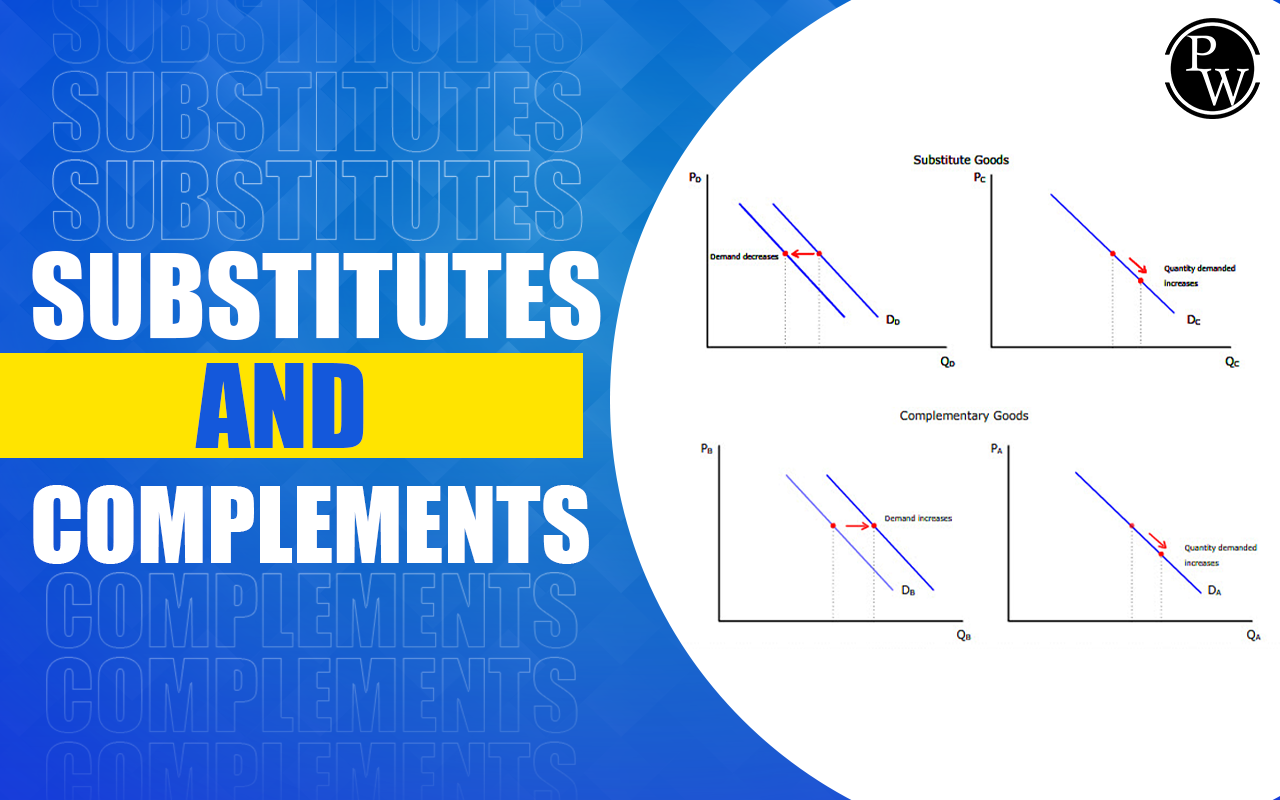

Substitutes and Complements goods can be used to know the relationship between a customer's chosen amount of a commodity and the price of a related commodity. Depending on whether the two commodities are complementary or substitutes for one another, the amount of a commodity the consumer chooses may grow or decrease in response to an increase in the price of a related commodity.
A commodity's demand often follows the price of its complementary commodities in the opposite direction. Contrary to supplements, coffee, and tea should not be consumed together. They contrast sharply with one another.
What are Complementary Goods?
Complementary goods, or complementary products or complements, play a crucial role in economics and marketing. These goods are closely related and are often consumed together, as using one product enhances the utility or value derived from the other.
Complementary Goods Types and Examples
Complementary goods can be classified into two main categories:
Joint Complements:
These are pairs of goods that are typically consumed together. Classic examples include printers and printer ink, smartphones and phone accessories, or cars and gasoline. In these cases, the demand for the joint complements is closely related, and an increase in demand for one leads to an increase in demand for the other.
Derived Complements:
Derived complements are goods whose demand increases due to the demand for another primary good. For instance, the demand for video game consoles increases the demand for video games, or the demand for personal computers boosts the demand for productivity software.
What are Substitute Goods?
Substitute goods or Substitutes are essential elements in the field of economics and marketing. These goods share similar purposes or functions, and consumers can easily replace one with another. Understanding the concept of substitute goods helps both businesses and consumers make informed decisions in the marketplace.
Substitute Goods Types and Examples
Substitute goods can be categorised into two primary types based on the degree of substitutability they offer:
Perfect Substitutes:
Perfect substitutes are substitute goods that provide consumers with identical utility and functionality. These products can be interchanged without any noticeable difference in consumer satisfaction. In other words, consumers perceive them as equivalent, and their preferences are solely determined by price or availability.
An example of perfect substitutes is the generic medications of the same active ingredient. For instance, aspirin made by different pharmaceutical companies is considered a perfect substitute because they have the same chemical composition and deliver the same pain-relieving effects.
Imperfect Substitutes:
On the other hand, imperfect substitutes are substitute goods that offer similar functionality and fulfill comparable needs but are not entirely interchangeable. While consumers can still substitute one product for another, they may experience differences in quality, taste, or other attributes that affect their preferences.
An example of imperfect substitutes is the differentiation between various brands of smartphones. While they all serve the same basic purpose of communication and access to apps, consumers may have specific preferences for certain brands due to differences in features, design, or brand reputation.
Substitutes Vs Complements
In the realm of economics, two fundamental concepts that influence consumer behavior and market dynamics are complementary goods and substitute goods. Read the comparison provided below, which presents the key differences between complementary and substitute goods in a tabular form, clearly understanding their distinct characteristics.
| Aspect | Complementary Goods | Substitute Goods |
| Definition | Products that are typically used together, as their consumption enhances the utility or value derived from one another. | Items that serve similar purposes and can replace each other to fulfil similar needs. |
| Relationship | Negative cross-demand elasticity (Inverse relationship) | Positive cross-demand elasticity (Direct relationship) |
| Effect of Price Change | When the price of one complementary good increases, the demand for its complement decreases, and vice versa. | If the price of one substitute good increases, consumers may switch to the cheaper substitute, increasing its demand. |
| Interchangeability | Complementary goods are not easily interchangeable, and consumers generally use them together. | Substitute goods are readily interchangeable, and consumers can readily switch between them. |
| Examples | Printer and printer ink cartridges, smartphones and phone accessories, peanut butter and jelly. | Coffee and tea, butter and margarine, Coke and Pepsi. |
What is Cross Demand Elasticity?
Cross-demand elasticity, also known as cross-price elasticity of demand, measures how sensitive the demand for one product is to changes in the price of another related product. It quantifies the extent to which variations influence the demand for a particular item in the price of a substitute or complementary product.
Relationship of Cross-Demand Elasticity with Substitutes and Complements
Cross-demand elasticity plays a pivotal role in understanding the market dynamics between complementary and substitute goods. It provides essential insights into how changes in the price of one product can affect the demand for another related product.
Relation with Complementary Goods:
In the context of cross-demand elasticity, complementary goods exhibit a negative relationship. When the price of one complementary good increases, the demand for its complementary counterpart decreases. The cross-demand elasticity for complementary goods is thus negative, indicating that as the price of one product rises, consumers are likely to reduce their consumption of the associated product.
For example, consider the case of printers and printer ink cartridges. As the price of printer ink rises, consumers may choose to print less or seek alternative solutions, decreasing the demand for printers.
Relation with Substitute Goods:
Substitute goods, on the other hand, demonstrate a positive relationship in terms of cross-demand elasticity. When the price of one substitute good increases, the demand for the alternative substitute product also increases. The cross-demand elasticity for substitute goods is positive, indicating that as the price of one product rises, consumers are inclined to switch to the cheaper alternative.
For instance, if coffee prices increase significantly, consumers may opt for tea as a more affordable alternative, resulting in a rise in the demand for tea.
Relationship of Substitutes and Complements with Demand and Supply
Complementary goods influence demand for each other - an increase in one boosts demand for the other, and vice versa. Substitute goods compete for demand - a price increase in one leads consumers to switch to the cheaper alternative. These relationships affect market equilibrium, prices, and consumer choices, prompting businesses to strategize effectively in a dynamic market landscape.
Also Read:
Substitutes and Complements FAQs
How do complementary goods affect each other's demand?
What is the formula to calculate Cross Demand Elasticity?
What happens when the price of one complementary good rises?
How do substitute goods influence demand?
How do businesses respond to substitute goods?












